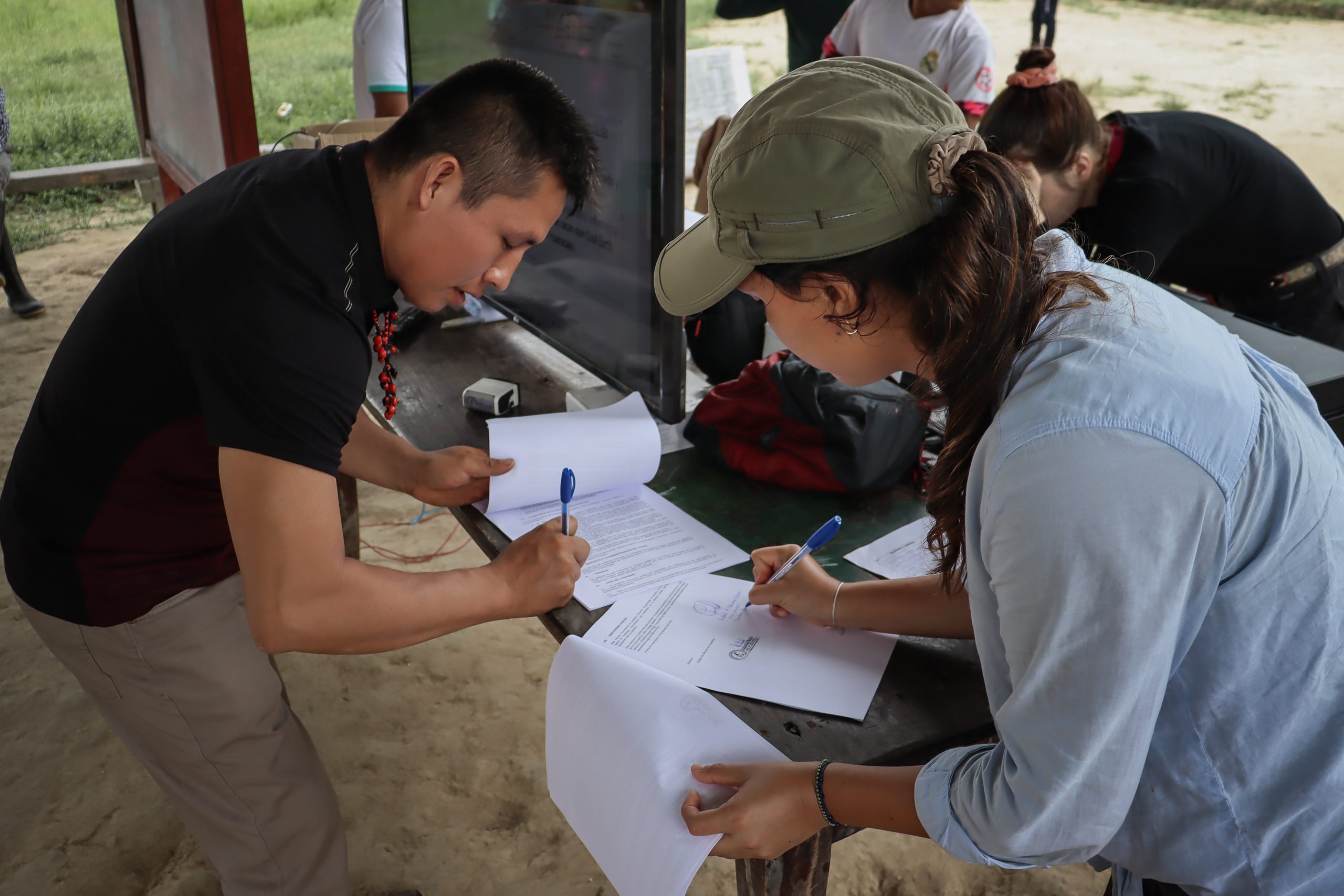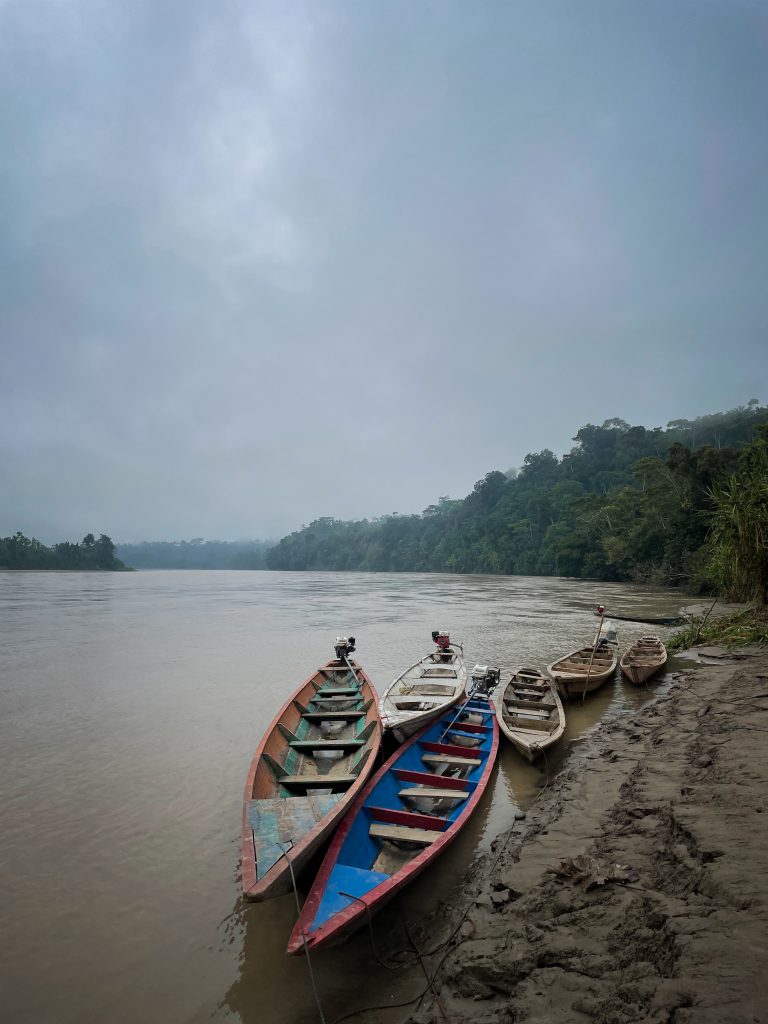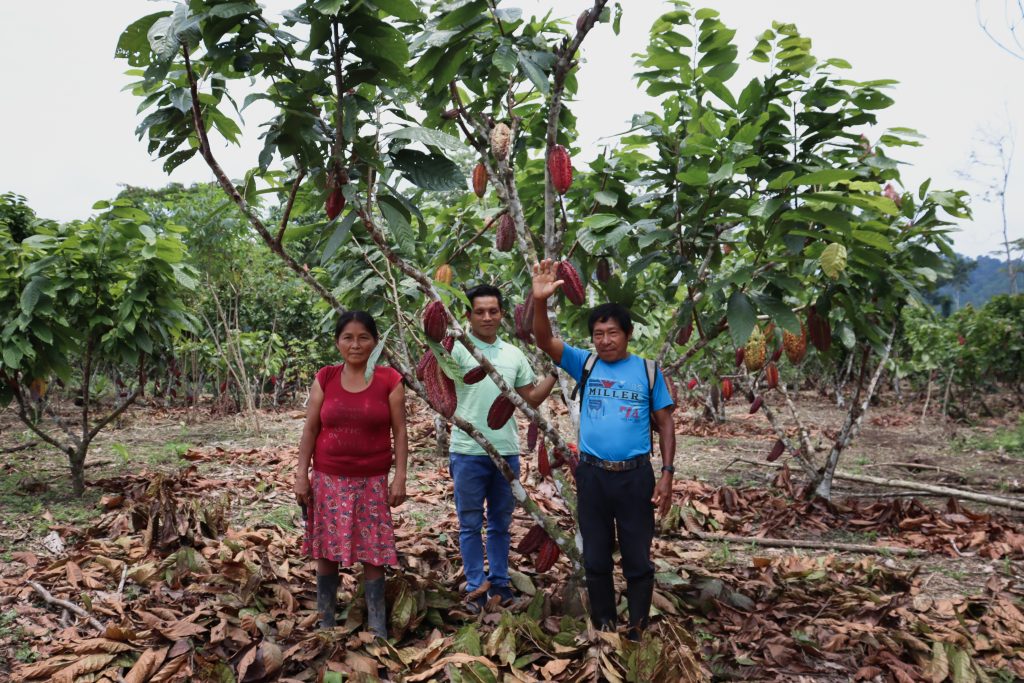
Reinforcing Relationships in Rainforest
This is issue 2 of The Bright Side. A quarterly blog with the purpose to inspire radical, climate optimism in people all over the world. How? With stories of action direct from the world’s most important, Earth cooling, carbon-sink rainforests. Action that our supporters fund with cash. Here, we focus on the bright side of rainforest conservation.

A lot can happen in a year. Ask any community. What’s happened in yours, how often have you shared experiences, thoughts, or talked with others about what you need and what you hope for? This kind of conversation is exactly what happened on our most recent trip into the Amazon rainforest. Here, our Peru-based team met with two Awajún communities – our partners in protecting rainforest.
Talking (or rather, listening) is crucial to our work.
True, ethical and responsible collaboration happens only with the proper consent and consultation. Only with respect for all can we truly support the people in our partnerships. People that excel at protecting their home, their rainforest. This is the basis of all our climate action across all three of the biggest tropical biomes.
The purpose of the trip was simple, get the forest agreement signed.
Forest agreements are crucial to our work and the autonomy of the people we work with. It’s the very first rule of Free, Prior and Informed Consent (FPIC). This establishes bottom-up participation. We don’t call the shots – the people we work with do. It creates a level of transparency and puts all of us on a more equal footing.

The power of paper.
The forest agreement has been signed by Awajún chiefs we work with from Urakuza and Huaracayo nine times since 2013. This happens only with consensus and input from the wider community at the general assembly before signing takes place. These meetings really are the foundation of any democratic process. Even the act of putting pen to paper is witnessed by hundreds of people, after which the cash detailed in the agreement is shared out, divided and put towards projects that benefit everyone. Projects promoting solar power infrastructure, or investing in medical supplies during Covid-19.
Forest agreements are incredibly symbolic to both us and the Awajún, and represent a relationship built on trust.
It represents proof of collaboration. All the trip participants; Isabel our Peru country manager, Alix our project coordinator, Wilson the local coordinator, Nelson, the field officer and Renee our administrator leave their Lima office and head into the rainforest, joined by Léna Prouchet, a Cool Earth researcher. A twenty-four-hour journey by a small plane, a pickup truck and boats up the Marañón River make for a more authentic relationship.

The week-long trip demonstrates the power of face to face communication, an antidote to Zoom calls and sporadic VHF radio chats. In the rainforest, words aren’t lost in translation. It makes for an enriching and transparent experience. After all, everything we do is about people. Being able to look the people we respect so much in the eye goes an incredibly long way in earning trust and connecting deeply.
Beyond forest agreements.
The signing of a forest agreement is a ceremonial affair with the whole community taking part and joining the conversation. These conversations happen after a presentation detailing what money was spent in the past 12 months, a report on last year’s activity, the new agreement, and funding allocations. The opportunities to connect with people and learn are enormous.
Alongside this, it gives our staff a chance to delve deeper into on-the-ground action and progress of existing projects like cacao growing and processing, the superfast and soil-enriching inga bean project and fish farming on the very river they arrived by. Leaving project spreadsheets behind and heading into the field provides so much learning for our team which enriches the support we offer. Another benefit is to provide face-to-face points of contact, which happens at the designated Cool Earth house. This space acts as a customer service hub, for people to speak with us and identify new possibilities for collaboration.

It’s all about people.
We have a strong relationship with people living in rainforest, but complexities around power and privilege must continually be reflected on. We’re not saviors – we’re partners and collaborators, and these visits help us do our jobs better and help us to understand the challenges faced by the communities that seek our support.
And whilst money is given, the real exchange is something far more valuable.